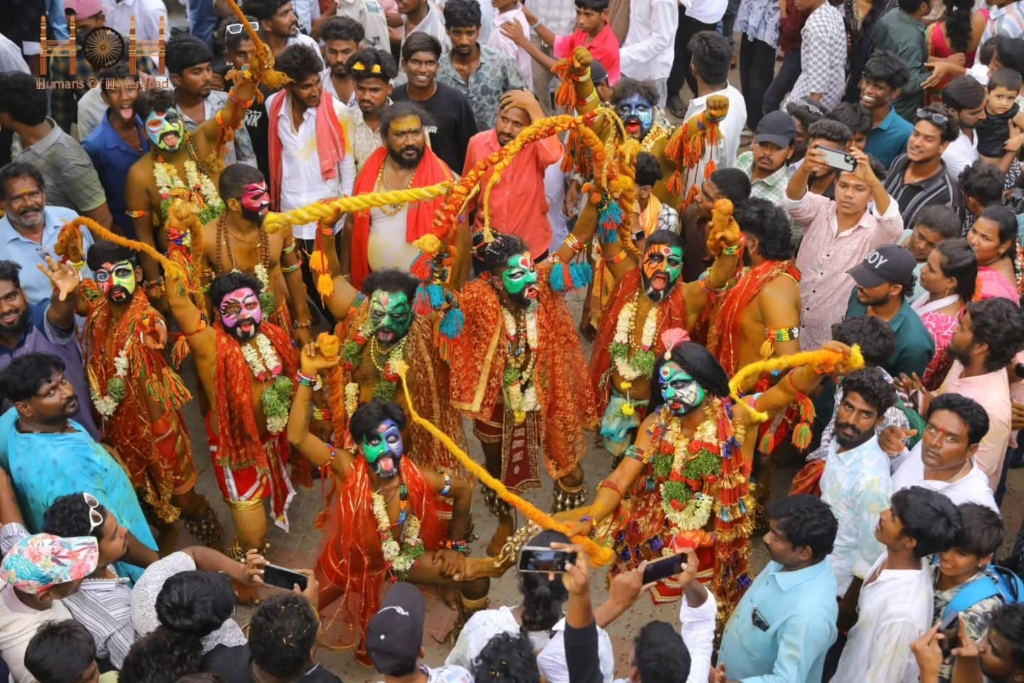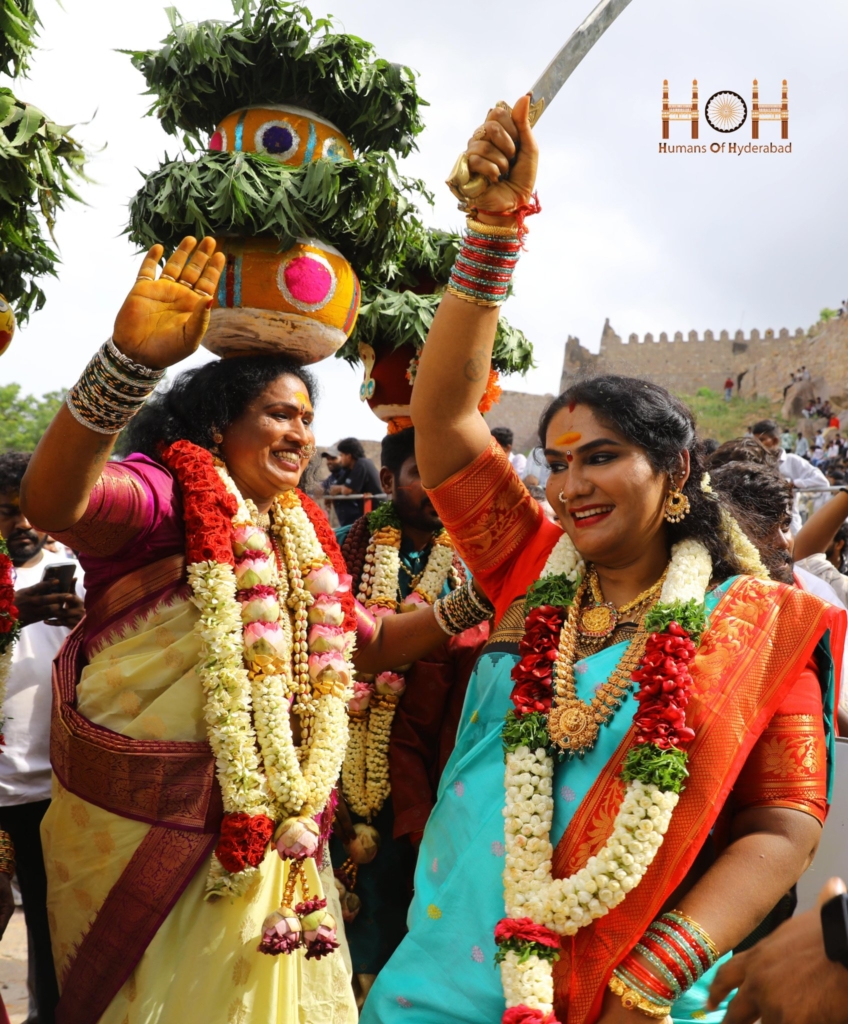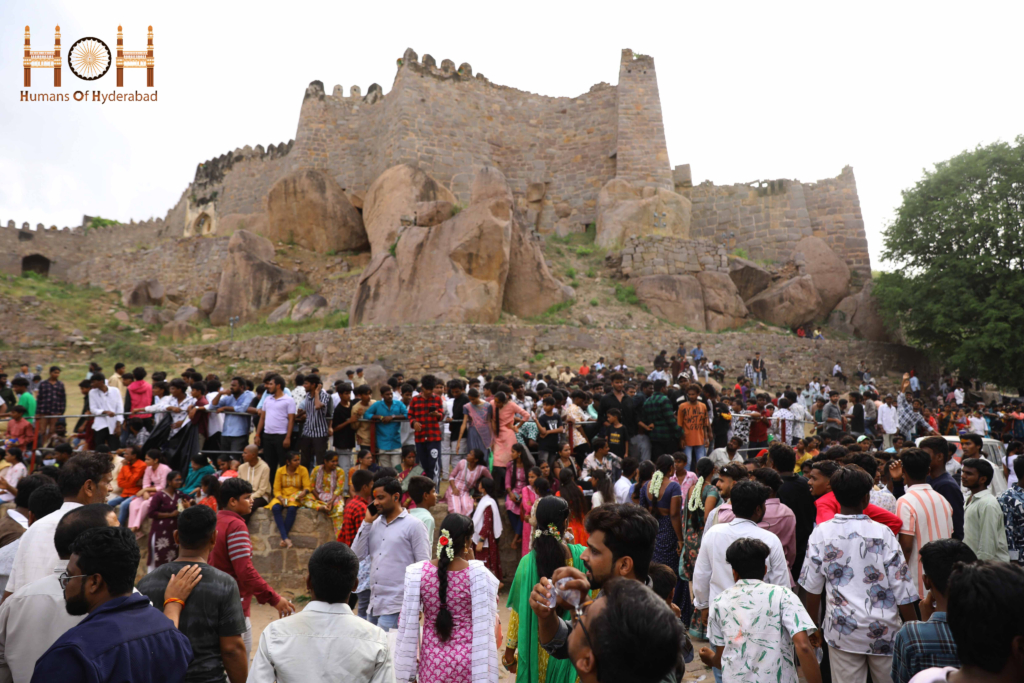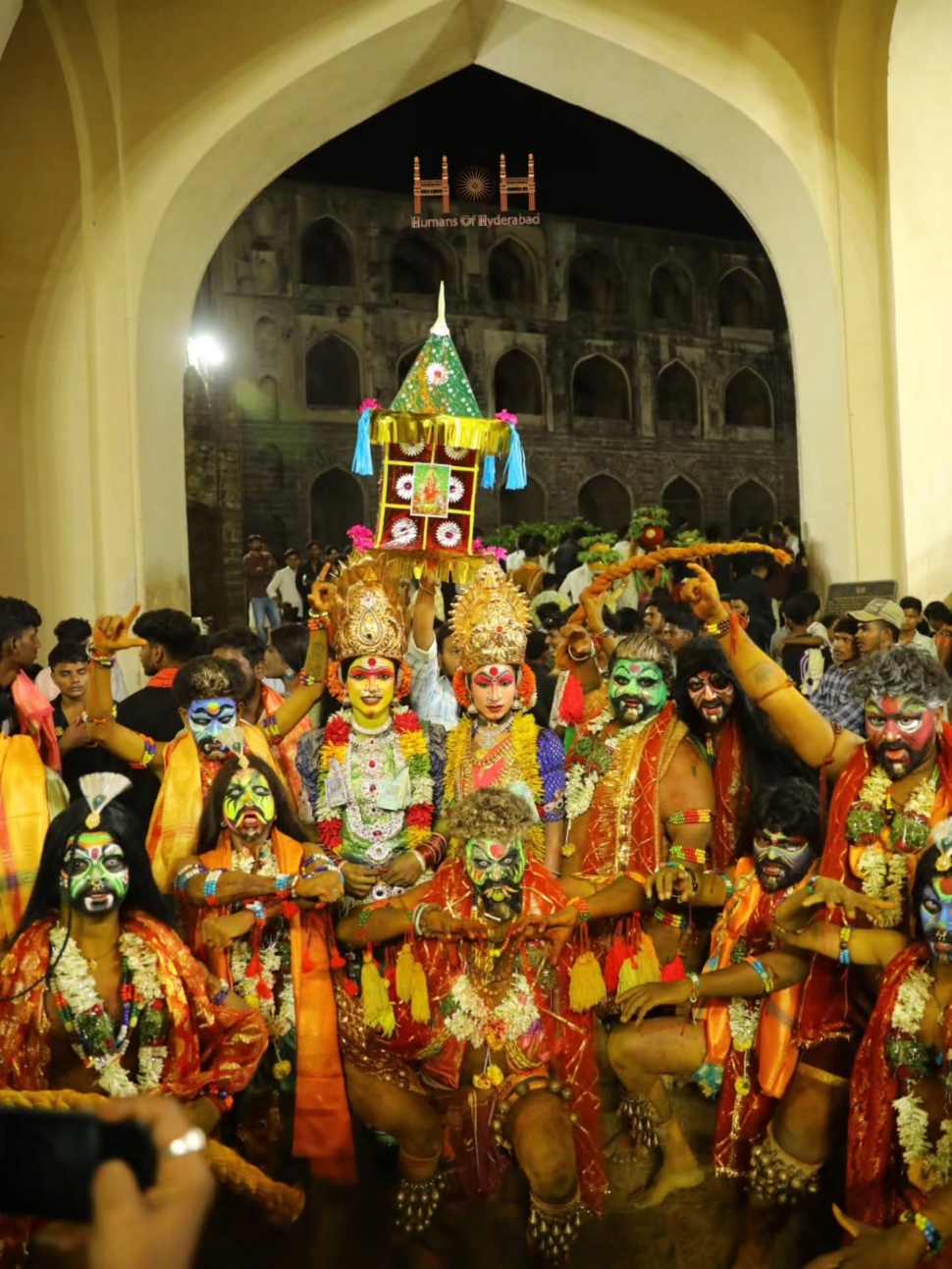“We’ve been taking part in Bonalu processions for several years now. Every year, during the Ashada Masam, we all come together: Potharajus, Mahankali artists, Shiva Shakthis, women carrying the ghatam, dappu drummers, and other folk performers.
I’ve been taking up the Potharaju role for over 18 years now. Potharaju is considered the goddess’s brother—fierce and protective when she steps out.

During the procession, Potharajus walk ahead of the ghatam, dancing and performing with the whip. It’s our way of leading the procession, keeping the energy high, and alerting people that Ammavaru is on her way.
Getting ready and playing these characters is an important part of the rituals. The colours we apply on the body, bells on the legs, forehead kumkum mark, whip—it’s a complete effort and takes hours to get ready. These days, it can cost ₹30,000 or more for our preparation, but that’s not what we think about. This is our offering, and we ensure we continue this tradition. People bring neem and coconuts as offerings to the Shiva Shakthis performing the ghatam, and we perform our rituals.

Bonalu started way back in 1813, when a deadly plague hit Hyderabad. People prayed to Mahakali Ammavaru to protect them from the epidemic. After the city recovered, they offered bonam to the goddess—rice cooked with jaggery, curd, and neem in a decorated pot as a mark of devotion. Since then, every year, this offering has continued. It’s not just a custom, it’s a prayer for protection, good health, and everyone’s well-being.

Bonalu festivities are rooted in Hyderabadi culture. It’s a devotional event, and we’ll keep doing it with the same faith, year after year.”
